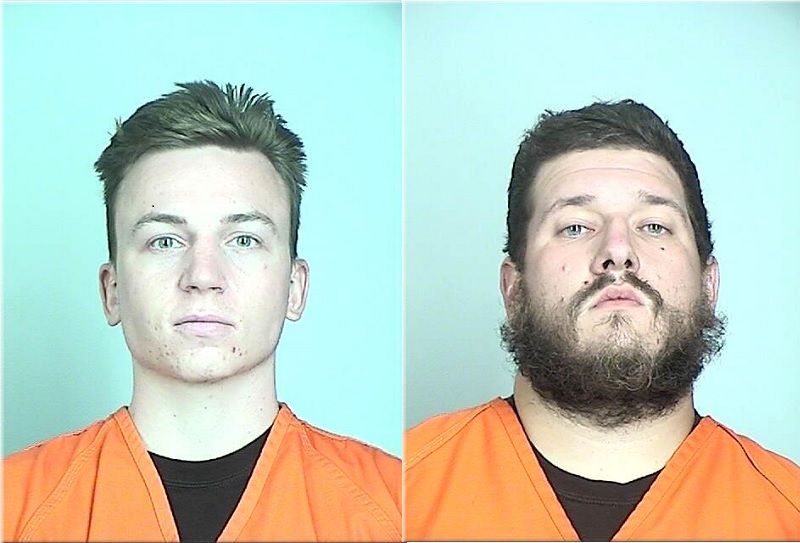
Shelburne County Jail
September 24, 2020
While extremists of differing ideologies aligning to further a common goal is not a new phenomenon, recent activity suggests that this overlap is becoming more common as extremist ideas are shared online. The Federal Bureau of Investigation’s (FBI) September 3, 2020 arrest of 30-year-old Michael Robert Solomon and 22-year-old Benjamin Ryan Teeter in Minneapolis is the most recent example of a hybrid ideology. To support their alleged violent goals of destroying the U.S. government, the defendants appear to have sourced their motivation from two opposing extremist factions: the anti-government boogaloo movement and the Islamist extremist foreign terror organization, Hamas. The pair allegedly planned to commit acts of violence against police officers and other related targets, and now face charges of attempting to provide material support to a designated foreign terror organization (Hamas).
Recent Examples
According to the criminal complaint, Solomon and Teeter were members of the “Boogaloo Bois,” a loosely connected far-right extremist movement that espouses an anti-government ideology. Adherents believe a second U.S. civil war will occur after violent uprisings against the government. Both defendants are alleged to have stated that their goals of overthrowing the U.S. government and police forces also aligned with those of the foreign terror organization, Hamas.
The complaint further alleges that Solomon and Teeter expressed the desire to act as “mercenaries” for Hamas in order to raise funds for the boogaloo movement and cited their need for funds as a means to “recruit members and for the purchase of land for a compound to train” members. In outlining their plans, the defendants emphasized how their material support would be “used overseas to attack Israeli [soldiers] and the U.S forces training with them,” demonstrating intended alignment with Hamas’ stated goal of destroying Israel.
Of note here is the FBI’s tactic: posing as members of a foreign terror organization (FTO) as part of an operation targeting domestic terrorists. That the FBI posed as an FTO to open a case against individuals espousing a violent, anti-government ideology demonstrates an unusual federal strategy to both investigate and prosecute domestic extremists, as well as the general fluidity and dynamic nature of this extremist threat. While the FBI often opens sting operations under the guise of an FTO, they have almost always targeted individual extremists seeking to act in the name of an Islamist extremist-motivated terrorist organization. The tactics used against Solomon and Teeter are therefore extremely rare: employing the FTO guise to target domestic extremists who believed they were interacting with members of an FTO but have no actual known links to an FTO.
This is not the first time an anti-government ideology has inspired extremists to apparently draw from both far right and Islamist extremist ideas. In June 2013, 23-year-old Joseph Jeffrey Brice was sentenced after attempting to provide material support to terrorists and manufacturing an unregistered explosive device. Brice cited the 1995 Oklahoma City bomber, Timothy McVeigh, as inspiration, claiming, “Tim’s characteristics are nearly the same as [mine], physically/politically,” and from online anti-law enforcement literature from various foreign terror organizations including al-Qaeda.
A third example demonstrates the multiple ways by which a range of extremist ideologies can overlap.
In December 2018, then-21-year-old Damon Joseph was arrested for attempting to provide material support to the Islamic State of Iraq and al-Sham (ISIS) and for planning an attack on a Toledo-based synagogue. In discussing his plans to attack a synagogue, Joseph expressed admiration for Robert Bowers, the white supremacist who attacked the Tree of Life synagogue in Pittsburgh in October 2018: “I admire what the guy did with the shooting actually…I can see myself carrying out this type of operation inshallah [God willing].”
Joseph’s explicit admiration for Bowers highlights the link between white supremacy and Islamist extremism -- two diametrically opposed ideologies -- and the danger posed by violent, antisemitic rhetoric, regardless of its specific extremist affiliation.
Shared Rhetoric
Occasions of overlap between opposing ideologies not only manifest in the planning of violent attacks, but also in online rhetoric. Far-right extremists have co-opted Islamist extremist language and propaganda in furtherance of their own violent agendas.
For example, both Solomon and Teeter belong to (and created) a sub-group of the boogaloo movement called the “Boojahideen,” which borrows from the Arabic term, “mujahideen,” denoting Islamist religious fighters. Furthermore, while likely mocking the Arabic language, far-right extremists have used stereotypical Islamist extremist rhetoric in their conversations on platforms like Telegram and Discord. One of the more commonly used terms is “white jihad,” which extremists have used to denote Hitler and “Nazi aesthetics.”
Yet another example of this overlap is the Base, an antisemitic white nationalist network. In addition to sourcing its name from the Islamist extremist foreign terror organization, al-Qaeda (the Base in Arabic), the group has demonstrated a strong affinity for Islamist extremist tactics and activity. In June 2018, the Base group leader Norman Spear tweeted: “al-Qaida [sic] used its international network and propaganda to rally fighters around one flag united in their conviction and self-sacrifice.” However, Spear also made sure to explicitly state that the Base was not cooperating with “people outside [their] ideological circles and racial circles.”
The arrest of Solomon and Teeter, therefore, is merely the continuance of a concerning trend that is increasingly manifesting in the overlap of two ideologically opposed forms of violent extremism. The pervasiveness of online platforms, which provide access to violent propaganda from all extremist ideologies, makes the emergence of similar hybrid extremist beliefs even more likely.